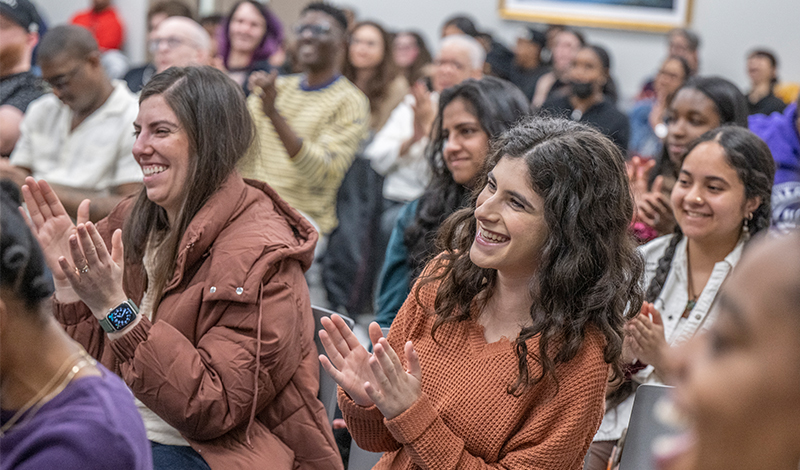This study series focuses on Nichiren Daishonin’s disciples, who faced challenges that we can still relate to today, and his enduring encouragement that we can apply to dynamically transform our lives.
When we’ve experienced long-standing challenges, it’s easy to feel worn down or impatient for things to take a turn for the better. But it’s amid such challenges that we can remind ourselves that Nichiren Buddhism exists for precisely such situations.
As an example, Nichiren wrote the following to the lay nun Myoichi, a widowed mother who had been struggling with serious challenges for some time:
Those who believe in the Lotus Sutra are as if in winter, but winter always turns to spring. Never, from ancient times on, has anyone seen or heard of winter turning back to autumn. Nor have we ever heard of a believer in the Lotus Sutra who turned into an ordinary person. The sutra reads, “If there are those who hear the Law, then not a one will fail to attain Buddhahood.” (“Winter Always Turns to Spring,” The Writings of Nichiren Daishonin, vol. 1, p. 536)
Nichiren Daishonin wrote “Winter Always Turns to Spring” in the fifth month of 1275.
While Nichiren had experienced continual persecution, including an attempt to behead him at Tatsunokuchi and his subsequent exile to Sado Island, the authorities’ oppression also extended to his followers, including Myoichi and her husband. Yet this couple had persevered with solid faith and an unwavering commitment to the Daishonin and his teachings.
Unfortunately, before Nichiren was pardoned from his Sado exile, Myoichi’s husband died, unable to witness his teacher’s ultimate victory.
Myoichi suffered from frail health while caring for two children, including a sick son. She nevertheless continued to support the Daishonin, persevering with resolute faith.
In this letter, the Daishonin pours his heart into encouraging her, saying that even the coldest, harshest winter gives way to the warm, fresh season of spring.
Using this example, Nichiren declares that a person who perseveres in faith and practice will welcome a springtime of victory in life. He, in effect, says to Myoichi that because of her sincere dedication and practice, she will overcome every adversity she now faces and see the beautiful spring flowers of happiness bloom.
In The New Human Revolution, Ikeda Sensei encourages two young women studying in Switzerland who complained about their difficulties. He says to them:
Because we experience the cold of winter, we long for the warmth of spring and feel joy when it arrives at last. If it were spring all year round, we wouldn’t experience such joy.
It’s the same with life, you know. Spring doesn’t last forever. Life, too, has its winters of hardship and suffering. But the important thing is to continue trying, never being defeated by such sufferings, and believing in the arrival of spring. (The New Human Revolution, vol. 5, revised edition, pp. 91–92)
Winter Chill Is Needed for Spring Flowers to Blossom
Cherry blossom buds begin to form in the summer after the spring bloom, but they enter a state of dormancy in autumn. The cold of winter is what awakens them from their sleepy state and sets them on a course of steady growth to blossom beautifully in spring. This process is called breaking dormancy. Winter sparks the latent innate power of life, functioning to awaken sleeping potential.
Each of us possesses a Buddha nature, which we may think of as the bud or seed of enlightenment, and genuine happiness. While this seed may lie dormant, we break that dormancy by struggling with problems and winter-like trials with courageous faith.
Taking on hardships is the exact opportunity to temper ourselves and develop strength, courage, wisdom and compassion.
Chanting Nam-myoho-renge-kyo with powerful resolve and continuing to move forward causes the potential of Buddhahood in us to awaken. In this way, we accumulate limitless good fortune and enable the flowers of victory to blossom.
Sensei also offers concrete advice to the two young women:
You need to set yourselves some goals to develop yourselves and deepen your capacity. And then you need to strive earnestly to realize those goals, without being defeated even when the going gets rough. Hardship is actually the greatest treasure.
Flowers bloom fragrantly in the spring because they have stored up plenty of nourishment until then. I’d like both of you to bring the flowers of happiness to bloom in your lives. Faith and Buddhist practice provide the nourishment your lives need to achieve that. (NHR-5, revised edition, 92–93)
Knowing that spring will come or hardships will eventually end doesn’t mean simply waiting for it to happen. Instead, times of difficulty are the very opportunities to nurture and energize the buds of our tremendous potential through our Buddhist practice.
—Prepared by the SGI-USA Study Department
You are reading {{ meterCount }} of {{ meterMax }} free premium articles

